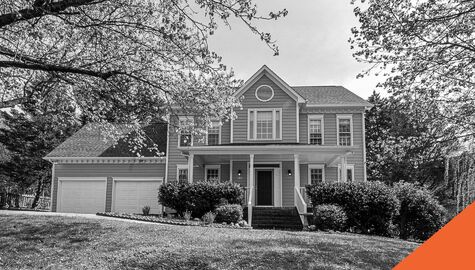What You Need To Know Before Modifying Your Car
Tuesday, 24 June 2025
If you're a car enthusiast or simply want to personalize your ride, modifying your vehicle can be a fun and rewarding experience. From upgraded exhaust systems to custom paint jobs and turbochargers, modifications can enhance your car’s performance, appearance, and individuality. But before you make any changes, it’s important to understand how car modifications are viewed under Canadian law, and how they can affect your car insurance.
Please note: This blog provides a general overview of how car modifications can impact your insurance. It is not all-encompassing and should not be taken as specific advice. Be sure to discuss your unique circumstances with a licenced insurance broker to receive guidance tailored to your situation.
What is Considered a Car Modification?
A car modification is any change made to a vehicle that differs from the original factory specifications. These changes can be cosmetic, functional, or performance-related—and they can be either minor or major.
Some common types of car modifications include:
- Upgraded rims or tires
- Custom paint or wraps
- Aftermarket exhaust systems
- Suspension changes (e.g., lowering kits or lift kits)
- Turbochargers or superchargers
- Tinted windows
- LED or HID headlight conversions
- Audio system upgrades
- Roof racks or spoilers
Essentially, if you're changing your vehicle from how it came off the lot, you’re making a modification. Even small changes like tinted windows or custom license plate frames can qualify, especially if they don’t meet provincial standards.
Legal vs. Illegal Car Modifications in Canada
Not all car mods are legal—especially when it comes to changes that affect safety, emissions, or visibility. Canada has strict rules, and each province has its own regulations under the broader federal Motor Vehicle Safety Act. Here's a quick look at what’s generally legal and what might land you a ticket (or worse).
Generally Legal Modifications (when done properly):
- Upgraded rims and tires (within safe size limits)
- Engine modifications with emissions compliance
- Performance air filters and exhaust (with approved decibel limits)
- Cosmetic changes like body kits or wraps
- Aftermarket stereos
- Roof racks or bike carriers
- Certified window tint (with allowable tint levels based on province)
Possibly Illegal or Restricted Modifications:
- Excessive window tinting (e.g., front side windows or windshield tinting is often prohibited)
- Underglow lights (some provinces allow them only if they are not red/blue or flashing)
- Loud exhaust systems (sound restrictions vary by province)
- Modified suspension that alters ride height significantly
- Removal of catalytic converters
- Colored headlights or taillights
- Nitrous oxide systems (banned for street use in most provinces)
- Illegal radar detectors (banned in most provinces)
Before making any changes, it’s best to check with your local transportation authority and insurance provider to ensure your modification is compliant. In some cases, what’s legal in Alberta might be restricted in Ontario.
How Do Car Modifications Affect Insurance?
Here’s the big question for many drivers: Will car modifications affect my insurance? The answer is almost always yes and in more ways than one.
1. Premium Increases
Modifications that increase the value or performance of your car often result in higher insurance premiums. That’s because your car is now more expensive to repair or replace, or may be at a higher risk of being involved in a collision.
Examples of modifications that can increase premiums:
- Turbochargers or superchargers
- Lowered or lifted suspension
- High-performance tires
- Custom paint jobs
- Upgraded audio or video systems
2. Possible Denial of Coverage
If you don’t declare a modification and later file a claim, your insurer may deny the claim or cancel your policy. It’s essential to report all vehicle modifications to your insurance broker—even seemingly minor ones.
3. Limited Options
Some insurers may decline to offer coverage for heavily modified vehicles. In these cases, you may need to work with a broker to find a specialty insurer that covers custom or performance-modified vehicles.
4. Adjusted Claims Value
If your modified car is damaged in an accident, the payout may not reflect the value of your modifications unless those changes were reported and added to your policy. For example, a custom paint job that cost $5,000 won't be covered unless it was disclosed and added as an endorsement.
How Much Does Insurance Cost for a Modified Car?
There’s no one-size-fits-all answer here. The cost of insurance for a modified car depends on several factors, including:
- The type and safety/performance impact of the modifications
- The make, model, and age of the vehicle
- Your driving record and location
As a rough estimate, you might expect to pay anywhere from 10% to 50% more on your premium depending on the modifications and the insurer’s risk assessment. Some cosmetic changes may not affect premiums at all, while performance upgrades or safety-affecting modifications could cause a significant increase.
The best way to know for sure is to speak with a licensed auto insurance broker who can assess your situation and provide quotes from multiple insurers. Connect with a BIG insurance broker today to make sure your custom ride stays fully protected.
Types of Car Modifications
Car modifications can typically be grouped into three main categories: performance upgrades, aesthetic enhancements, and functional modifications.
Performance Upgrades
Performance modifications are designed to boost a vehicle’s speed, responsiveness, and overall driving experience. These upgrades are popular among car enthusiasts who want more than what the factory offers.
1. Engine Tuning
Engine tuning involves adjusting the internal computer settings of your vehicle, such as fuel-to-air ratio, ignition timing, and throttle response, to optimize performance and fuel efficiency. This can be done using aftermarket tuning software or physical ECU remaps. While tuning can unlock horsepower, it may also impact your warranty or emissions compliance.
2. Exhaust System Upgrades
Upgrading your exhaust system can improve both performance and sound. Aftermarket systems often include high-flow catalytic converters, performance mufflers, and wider piping to enhance airflow. The result? Better engine breathing and that satisfying growl many enthusiasts love. Keep in mind, overly loud systems may violate provincial noise bylaws.
3. Suspension Modifications
Whether you're lowering your car for a sleeker look or lifting it for off-road adventures, suspension changes can drastically affect ride quality and handling. Popular upgrades include adjustable coilovers, lowering springs, sway bars, and strut tower braces, all aimed at improving cornering and responsiveness.
4. Brake Upgrades
Improving your stopping power is just as important as enhancing other elements of your vehicle. High-performance brake pads and upgraded calipers can reduce braking distance and improve safety.
Aesthetic Modifications
Not all modifications are about speed—many car owners modify their vehicles simply to turn heads or express their personal style. Aesthetic mods don’t usually impact performance but can increase your car’s visual appeal (and resale value, depending on the buyer).
1. Custom Paint or Wraps
Changing your car’s color with a high-quality paint job or vinyl wrap can make it stand out. Wraps also offer the benefit of being reversible and are a great option for drivers who want a temporary transformation.
2. Aftermarket Wheels and Rims
Upgrading to custom wheels can drastically change your vehicle’s look. Whether you’re going for a sporty, luxury, or aggressive off-road appearance, rims come in various finishes, sizes, and designs. Be sure to stick with safe sizing to avoid legal and mechanical issues.
3. Body Kits and Spoilers
From aggressive front splitters to widebody fenders and spoilers, body kits can give your car a performance-oriented aesthetic. While some kits are purely cosmetic, others (like rear diffusers or spoilers) may also improve aerodynamics.
4. Window Tinting
A sleek window tint not only boosts visual appeal but also reduces interior heat and UV exposure. Just make sure your tint level complies with provincial regulations—too dark, especially on front side windows or windshields, can be illegal.
5. Lighting Upgrades
LED or HID headlight conversions, underglow kits, and custom tail lights are popular ways to enhance your vehicle's visual presence. However, keep in mind that some lighting colors and brightness levels may be restricted depending on your province.
Adding performance or aesthetic upgrades can take your car from ordinary to extraordinary—but it's important to understand how these changes affect your insurance, safety, and legal status.
Talk to BIG Insurance Before You Modify
Thinking about modifying your vehicle? Make sure your insurance keeps up with your upgrades.Transparency ensures that your policy reflects the true value of your car and that you’re fully protected in the event of a claim.
Let us help you customize with confidence—because your insurance should be as unique as your car. Contact us today for a no-obligation quote or advice on how to insure your modified vehicle properly.



